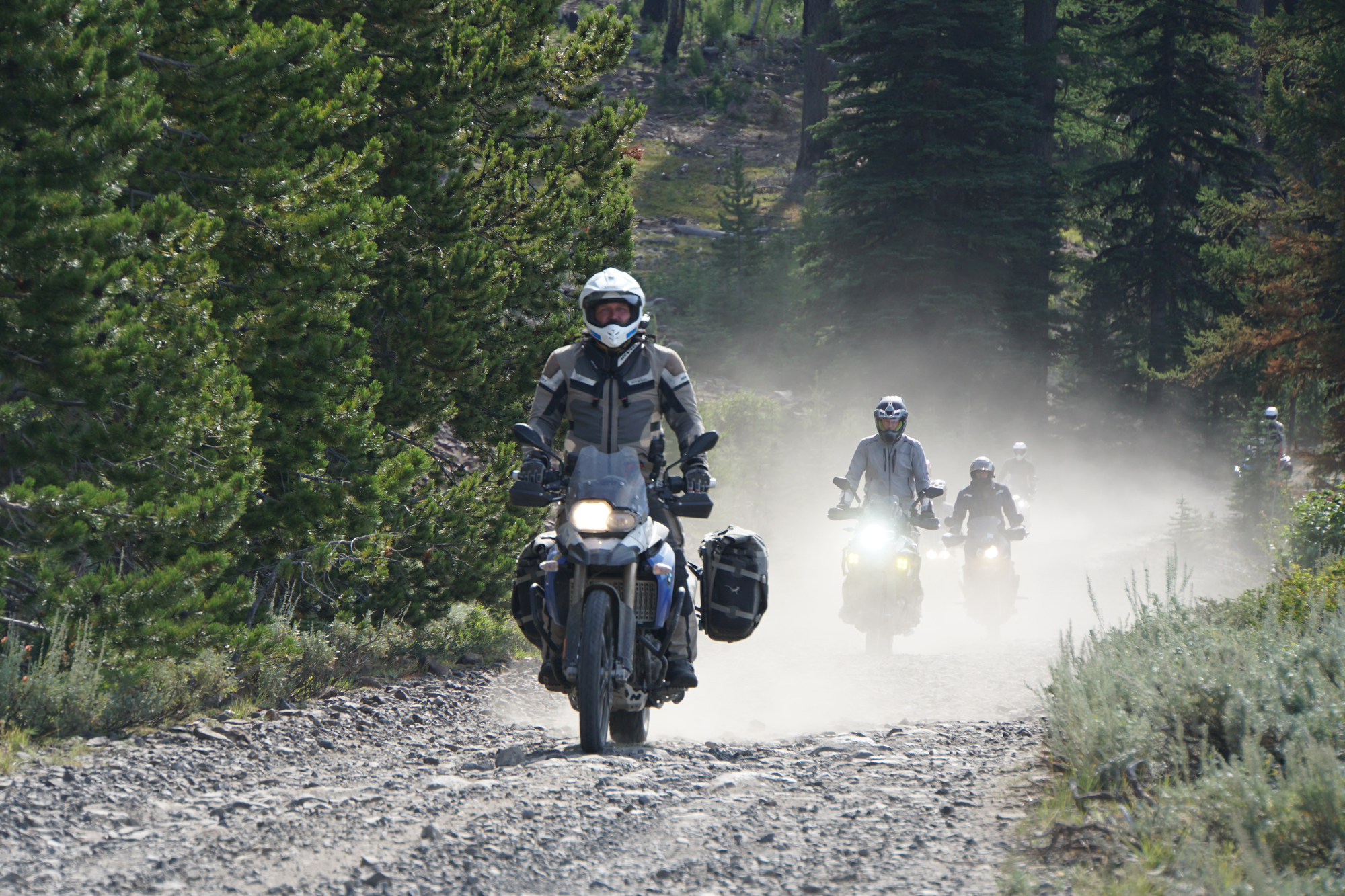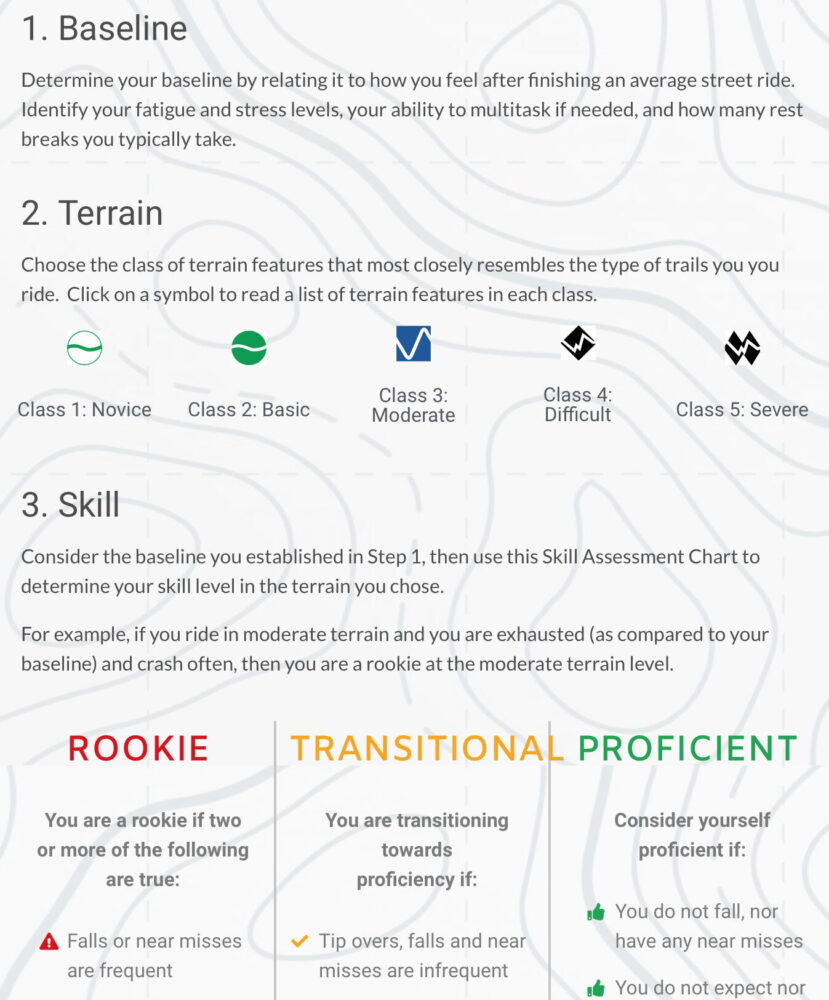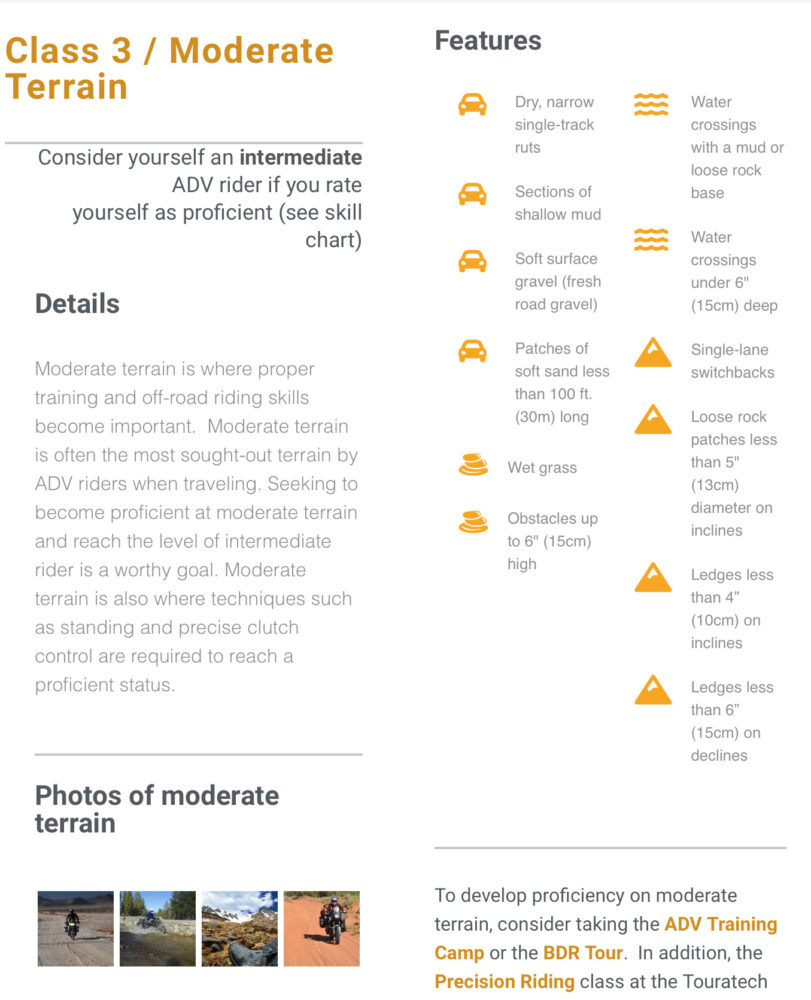Photo: Christina Tkacs
It’s been a long day. The sun is sinking low, and camp is still 30 miles away. One rider drags behind, struggling to keep pace. Fortunately, the ride leader is counting heads at every turn, but tension mounts as darkness approaches.
If you ride off road, chances are you’ve been “that guy” at least once. Will every day cover this many miles? This terrain is rough! Did you join the wrong group? If you’re lucky, your new friends wait for you, but how did you get yourself into this? Could it have been prevented?
Vetting riders for a training class, day ride, or multi-day tour is a common challenge for those in the adventure motorcycle community. In a four-wheeled rig, penalties for failure may involve sheet metal damage but, less frequently, personal injury. On a motorcycle, any misjudgment might lead to a broken bike, serious group delays, or a helicopter ride. Where one individual is sometimes a big fish in the local pond relative to the skills of his buddies, it is common for those who wish to roam afar to end up over their heads when they hook up with more accomplished riders. One person’s ceiling is, all too often, another one’s floor.

Photo: Christina Tkacs
Until now, most rider skills assessments have been subjective. Riding schools, tour companies, and ride forums do their best to advise participants of road and trail conditions and group expectations, but what is challenging for one rider may seem boring to the next. Some ask riders to select their skill level from a numerical scale, but who knows to what or whom they are being compared? Self-evaluations are limited by experience and exposure to varying conditions; dissimilar motives may cause those describing a road or trail to minimize or over-state the level of difficulty, depending upon whether their intention is to fill a class, encourage folks to join a ride, keep the group small, or weed out anyone who might slow the pace. By using a standardized skills assessment system, a trainer, tour company, or group ride leader could suggest a minimum standard for any given ride, and the trails themselves might be rated accordingly. Does such a standardized rider skills rating system exist? Perhaps, now, it does.

Bret Tkacs of Puget Sound Safety Off Road (PSSOR) runs the oldest and one of the most widely respected off-road motorcycle training academies in the United States. Through his vast experience worldwide teaching riders of all types, he has created an online skills rating system to help tour guides, trainers, and individual riders measure the ability to negotiate terrain without having to “just send it” and hope for the best. It was an interview question that inspired Tkacs to undertake the daunting task.
“While doing an ADV podcast several years ago, the host asked if I could share with riders how they can accurately assess their skills,” said Tkacs. “The result was initially far too complex to be useful for the average rider, so I simplified it to its current form. It is impossible to improve your skills if you don’t know the issues, and this system gives a universal baseline, which could be used by ADV riders, schools, tour companies, and clubs. This led to the two-part rating: first, rate terrain; then, rate your level of proficiency on that terrain.”
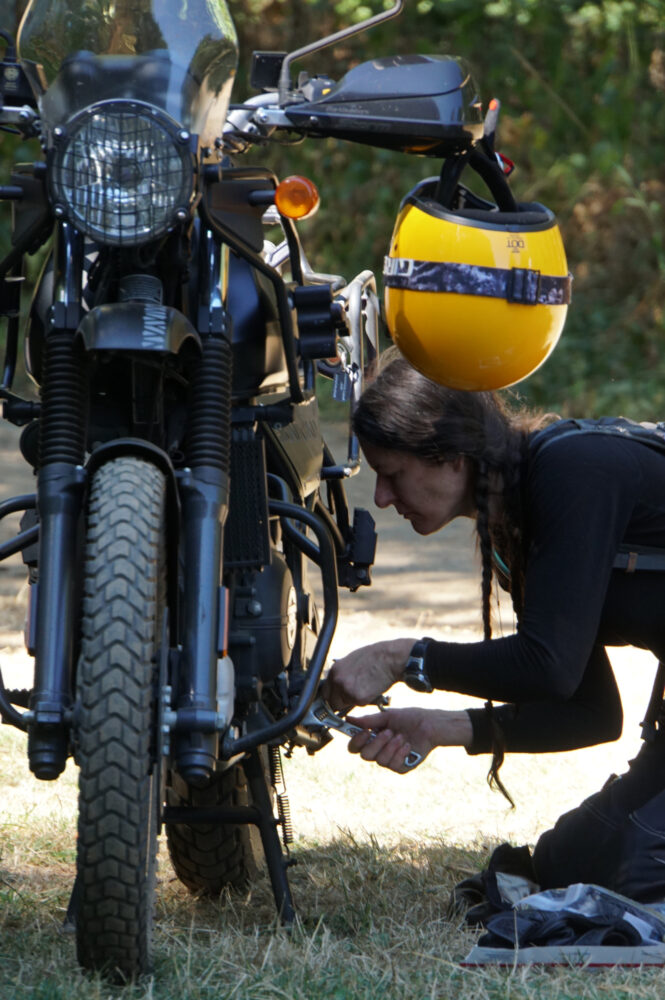
Photo: Christina Tkacs
To ensure this is a comprehensive resource, Tkacs reached out to professional ADV trainers and a diverse group of male and female, non-professional ADV riders to create a full complement of terrain features with details, pictures, and tips and tricks. “All of this is free to the riding world and will remain free,” said Tkacs. “My goal is to help riders enhance their riding experience while better managing the risk they choose to take.”
The result of Tkacs’ work is a universally accessible online resource that uses three categories of criteria to rate riders, preceded by a set of assumptions which presume the rider is using a large displacement, stock, or nearly stock adventure motorcycle, fully loaded for travel. The outcome is a rating that categorizes riders as either Novice, Basic, Intermediate, Advanced, or Expert.
*Click on the photos for complete images of each segment of the plan.
Baseline
To determine a baseline, riders contemplate how well they handle a routine street ride, considering fatigue, stress level, and ability to multi-task. These considerations later figure into the rider’s self-assessment.
Terrain Selection
Terrain is broken into five categories to match the rider: Class 1, Novice; Class 2, Basic; Class 3, Moderate; Class 4, Difficult; and Class 5, Severe. Each type of terrain has a clickable link for further description, with details such as road features, obstacles, water features, and hills. For instance, water crossings less than 4 inches deep with a solid base fall within the Basic Terrain classification. A water crossing up to 6 inches deep with a base of mud or loose rock falls into the Moderate Terrain category. Users are encouraged to click on the video corresponding to each terrain classification for a rider’s view.
Additional Considerations are provided to further enhance the user’s understanding of the system. Ultimately, these factors combine to give the rider a rating from Novice to Expert.
Class 1
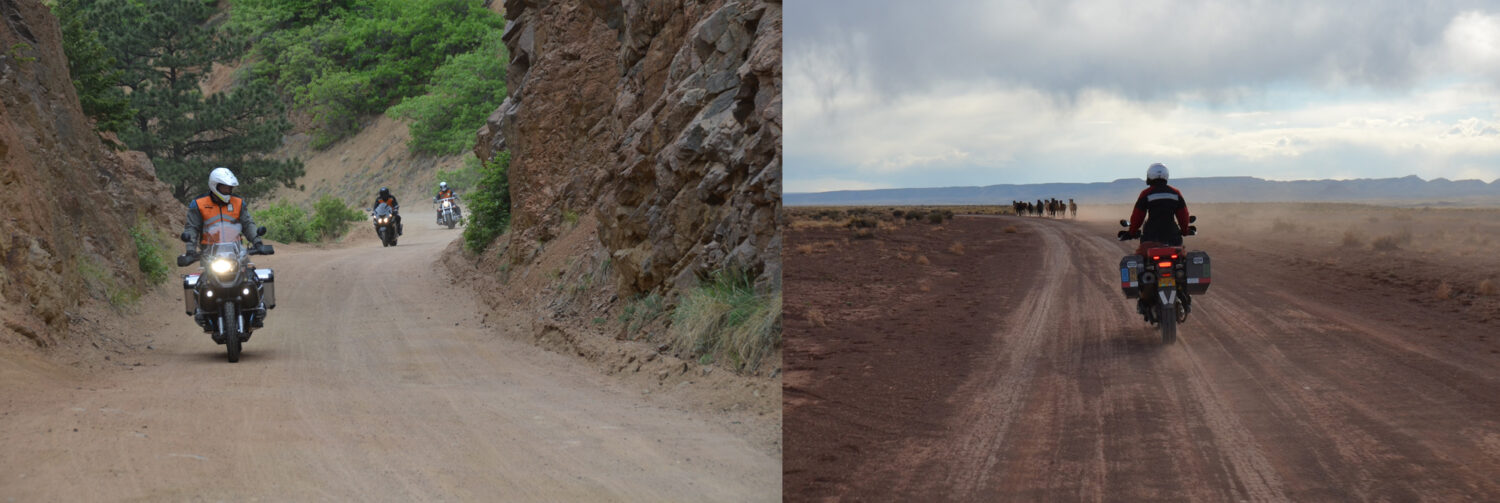
Photos: Bret Tkacs. Easy, scenic roads similar to paved, with the occasional distraction or mild-terrain shift. A proficient rider is relaxed and able to take in more than just what lies ahead.
Class 2

Photos: Bret Tkacs. Skill and experience promote confidence on familiar terrain. Water crossings with a solid base comprise elements of Class 2 Terrain.
Class 3

Photos: Bret Tkacs. Class 3 Terrain might include patches of rocks less than 5 inches. Ledges of less than 4 inches can be easily climbed by a rider with Intermediate Skills.
Class 4

Photos: Bret Tkacs. An advanced rider will show proficiency in Class 4 Terrain. In Class 4 Terrain, rocks may exceed 5 inches.
Class 5

Photos: Bret Tkacs. Few riders would qualify as proficient in Class 5 Terrain. Assistance may be required, and weather changes may make the trail impassable. Expert riders may feel comfortable attempting deep water crossings with swift currents and an unstable base.
Using The Rating System
To rate yourself, first read all the criteria and watch the short videos, becoming familiar with the requirements for terrain classifications and rider skill levels.
Assess yourself on each classification of terrain until you find the one that exceeds your proficiency level. For example, after watching the videos, considering terrain descriptions, and taking into account your baseline assessment, you may be confident in taking your loaded adventure machine over Moderate Terrain without undue stress or fear of falling. At this level, you may also be comfortable managing your GPS and scouting nice overlooks or other scenic photo opportunities while you ride. In this case, you are considered Proficient in Moderate Terrain.
Although you may believe you could get through some elements of Difficult Terrain, such as gravel deeper than 3 inches or a swift water crossing 7 inches deep, you expect you would dab often or fear falling. You would thus be considered Transitional in Difficult Terrain. The highest level of terrain at which you consider yourself proficient determines your rating. Thus, proficiency in Moderate Terrain defines you as an Intermediate adventure rider. These rider skill ratings are listed on each Terrain classification.
Knowing you have a ride coming up, you are now equipped with a way to intelligently assess your skills relative to the expected terrain, as well as a rating that can be compared with other participating riders using the same assessment tool. Clearly, those who will honestly implement the rating system can go in with their eyes wide open.
Once having selected your skill level, the Additional Considerations section can help you fine-tune your status. If you are fit, eager, and riding a well-equipped machine, you might wish to tackle the next level as long as your fellow riders are either equal in their assessments or committed to maintaining a slower pace that will allow you to take your time negotiating areas where your skills are Transitional.
Also, with a standardized rating system, trail designers could suggest skill level requirements to safely accomplish their routes. For example, if a ride over Black Bear Pass in the rugged San Juan Mountains of Colorado were rated for Advanced riders, those planning to join the trip could quickly and accurately assess whether safely completing the ride is a reasonable expectation. A tour rated as suitable for Basic riders might send an Expert rider looking elsewhere for a more technical challenge.
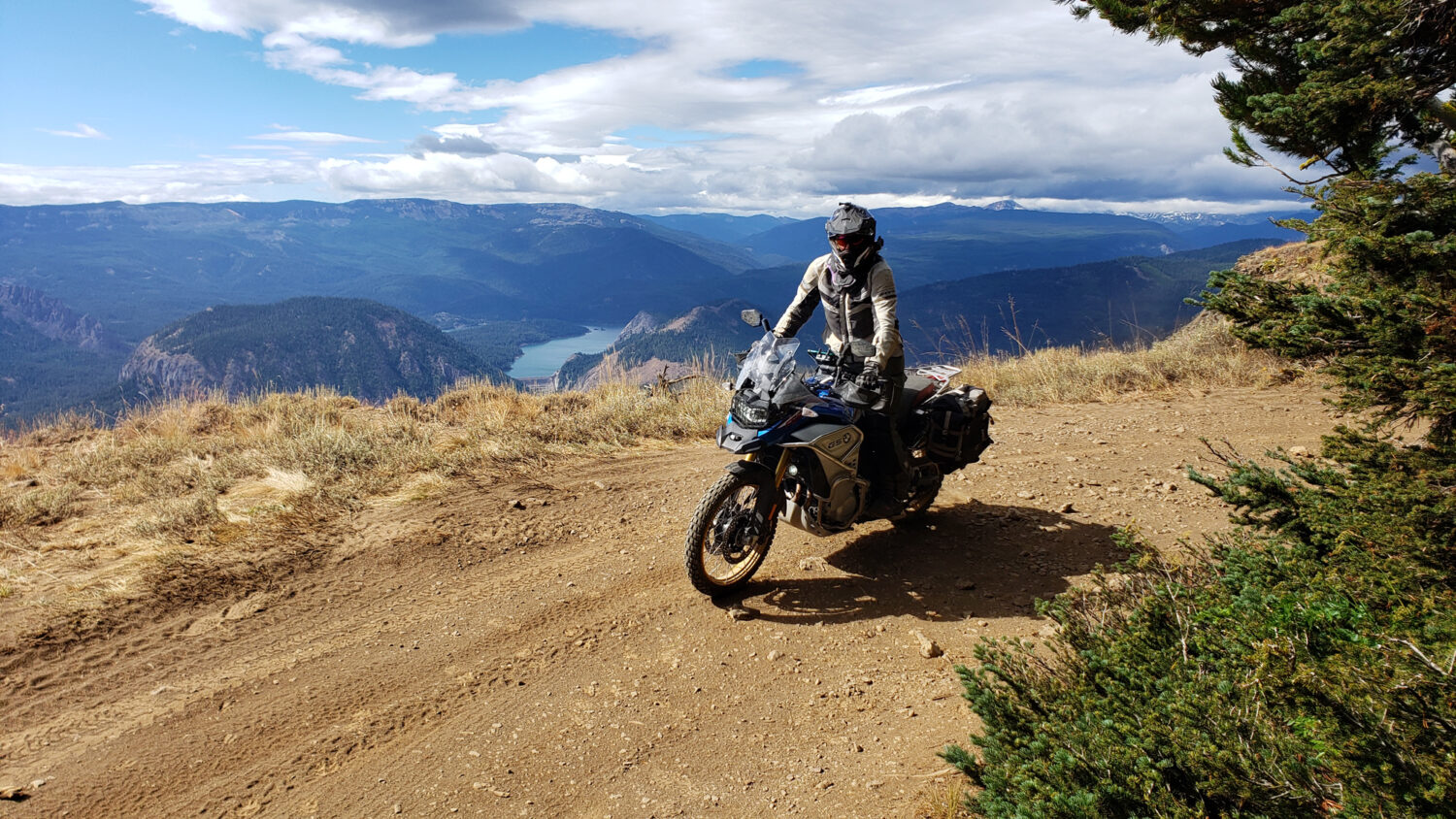
Photo: Christina Tkacs
Professional training is a good way to improve proficiency in a low-risk environment. Each terrain classification offers suggestions for training within Tkacs’ program, or you could find another training academy’s program to accommodate your aspirations.
The potential application of Tkacs’ ADV Rider Skills Evaluation System, itself a dynamic system which can and will be refined, is broad and deep. Some initiative is required on the part of users, but the potential rewards are many. Utilizing this system before joining a tour or using it as a way to determine which training class to take next should result in an increase in safety, satisfaction, and successful completion of rides that have previously ended in a broken and confusing array of “I thought I was going to die” stories. Frustration for tour guides, trainers, and guests alike could be significantly reduced, and the nebulous duty of vetting riders for sketchy group rides could be mitigated. And, like monitoring your net worth as you progress through life, you can monitor your progress as an adventure rider. Looking back, wouldn’t it be great to say, “I remember when I was a Novice level rider. Now I am Advanced. I hope to make it to Expert someday.” And you can leave the near-death experiences for folks whose eyes are not yet open.


